Kazuhito Kawai is a ceramist trained with knowledge and understanding of Western contemporary art receiving an MA in fine art in 2007 from the Chelsea College of Art in London 2007. After returning to Japan, he studied ceramics at the Ibaraki Prefectural College of Ceramics, graduating in 2018 with a BA (Hons) in Fine Art. He currently lives and works in Ibaraki Prefecture where he was born in 1984. Writing about his art the Taka Ishii Gallery explains:
“After studying contemporary art, his encounter with the medium of ceramics was an experience that liberated his creativity and led him to a breakthrough. Characterized by dynamic colors and shapes, his ceramic works show various expressions of irregularity, ugliness, grotesqueness, and fragility, revealing the inner self brought out by the material in a multi-layered way. The piled-up lumps of clay reflect a dialogue between the repeated collages of clay and himself, a layered representation of the artist’s inner self and state of mind”.
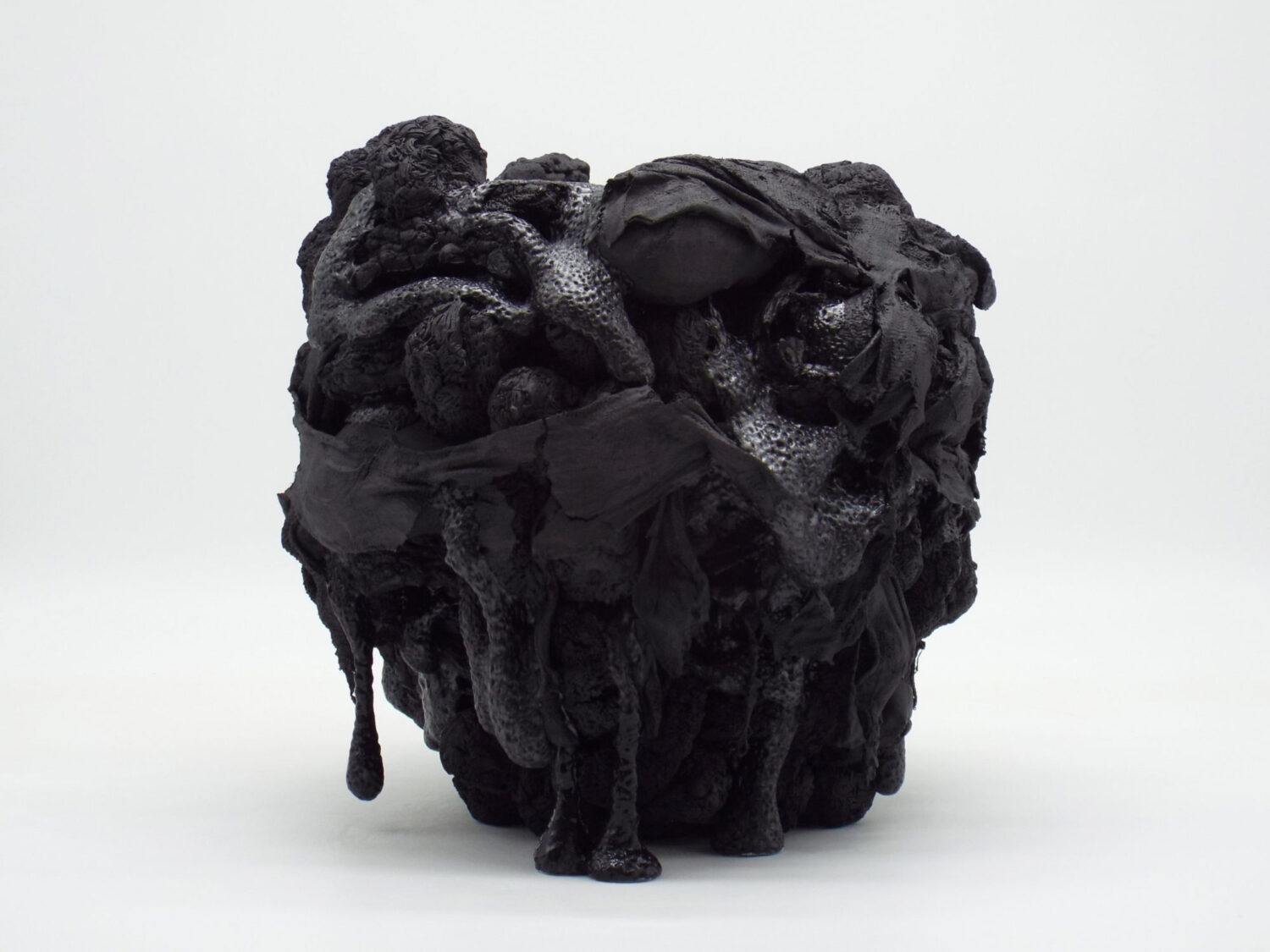

Clearly, his work belongs to the Katuro Kuwata + Brian Rochefort school of extreme glazing. They have hundreds of imitators world-wide. This has threatened and caused considerable pain for Kuwata who has written about this situation. But when one sits at the top of the tree as Kuwata and Rochefort do, this is the inevitable price of stature. It is rarely fatal to a career if you are #1.
While there can little doubt that Kawai has been influenced, the question is whether that is a reasonable homage (very common among artists early in their careers) or flat-out mimicking. With that in mind, let’s look at the work more closely. These ceramics all come from his exhibition this year at Sokyo Gallery in Kyoto and the images are used with permission of Sokyo.
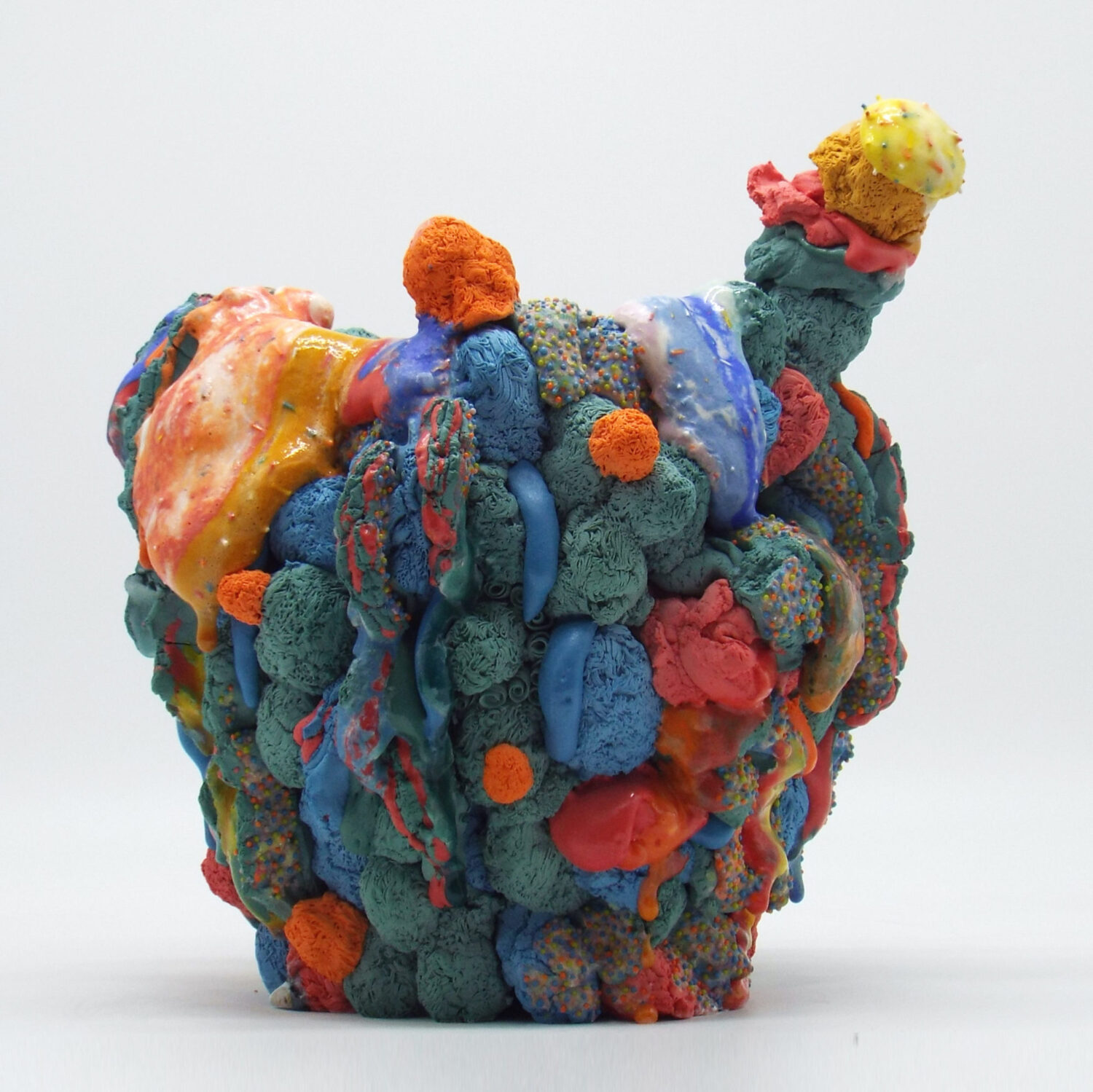
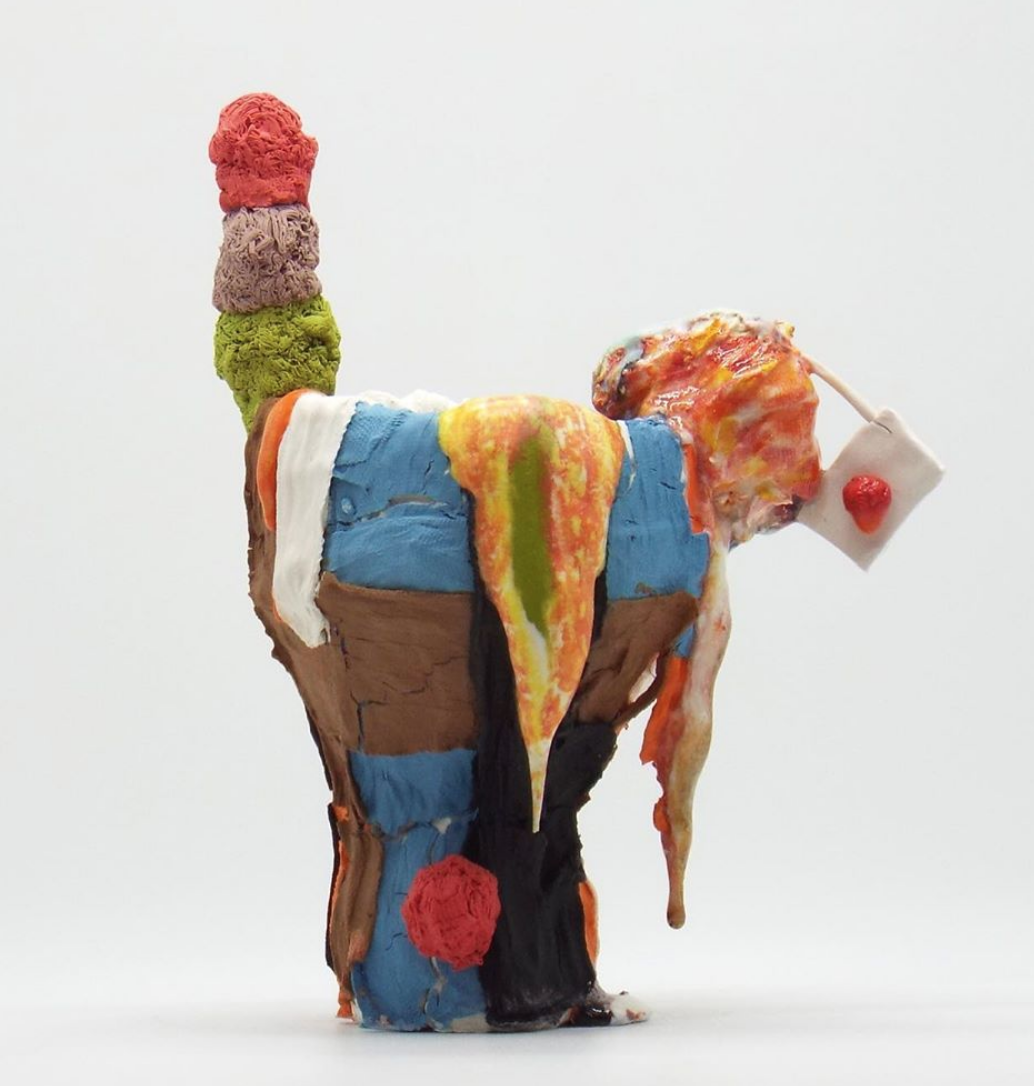

The works are baroque in spirit though nurturing rather than sexual. The way in which he uses glazes, slips and relief clay in context to the form is different. The polychrome surface collage is tightly knitted around the form, from top to toe, even the vestigial handles, whereas to Messrs. Katuro + Rochefort tend, more frequently, to leave part of the form visible with its monochrome surface, bringing its bland charm it into the dialogue. Downward flow of glaze is part of their kinetic aesthetic but not for Kawai. Here and there is some primordial ooze but mainly his surface and form are bonded and static. The relief work looks porous and even soft, like cauliflower florets in some cases, or hanging tufts of raw wool.
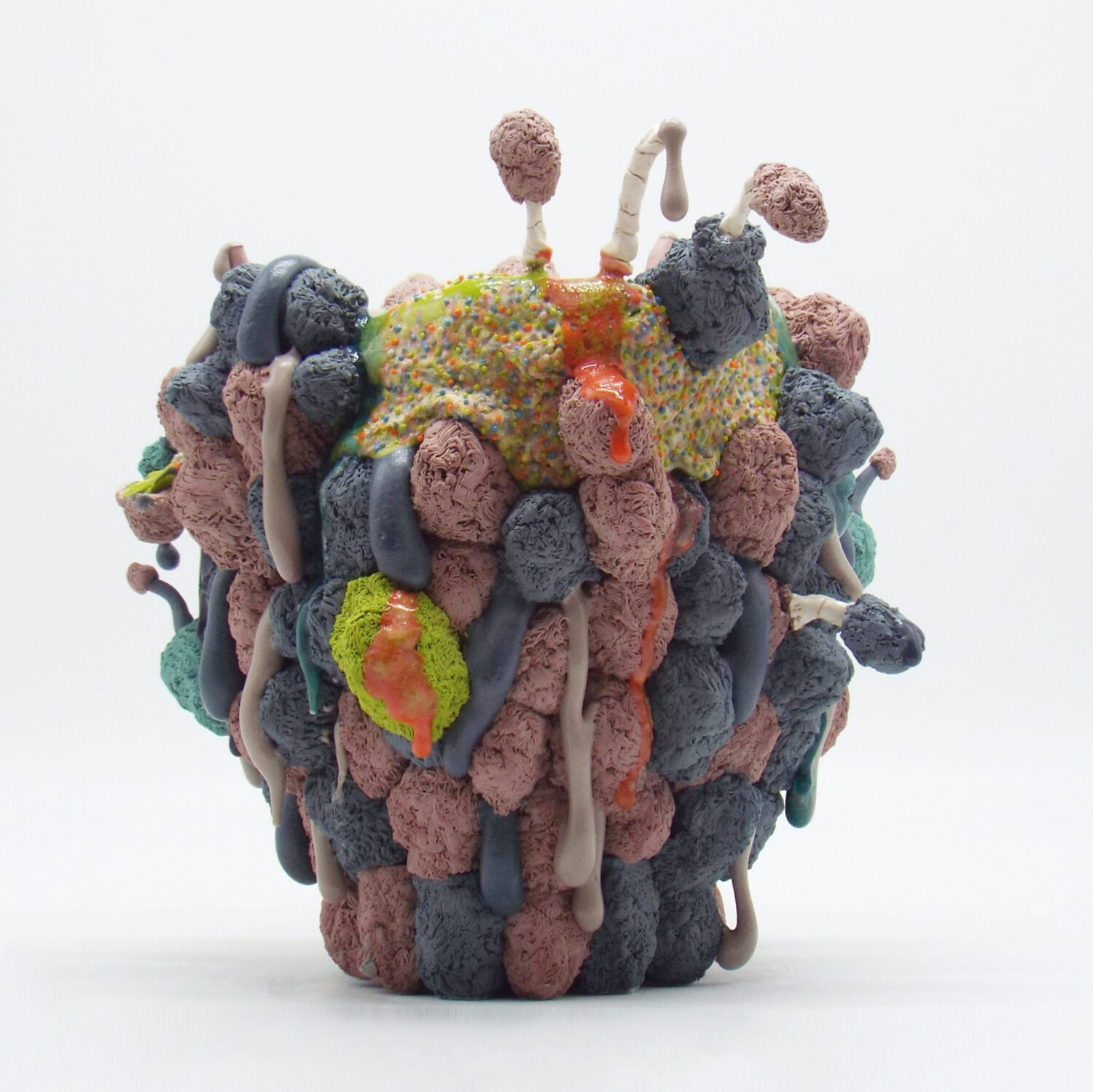
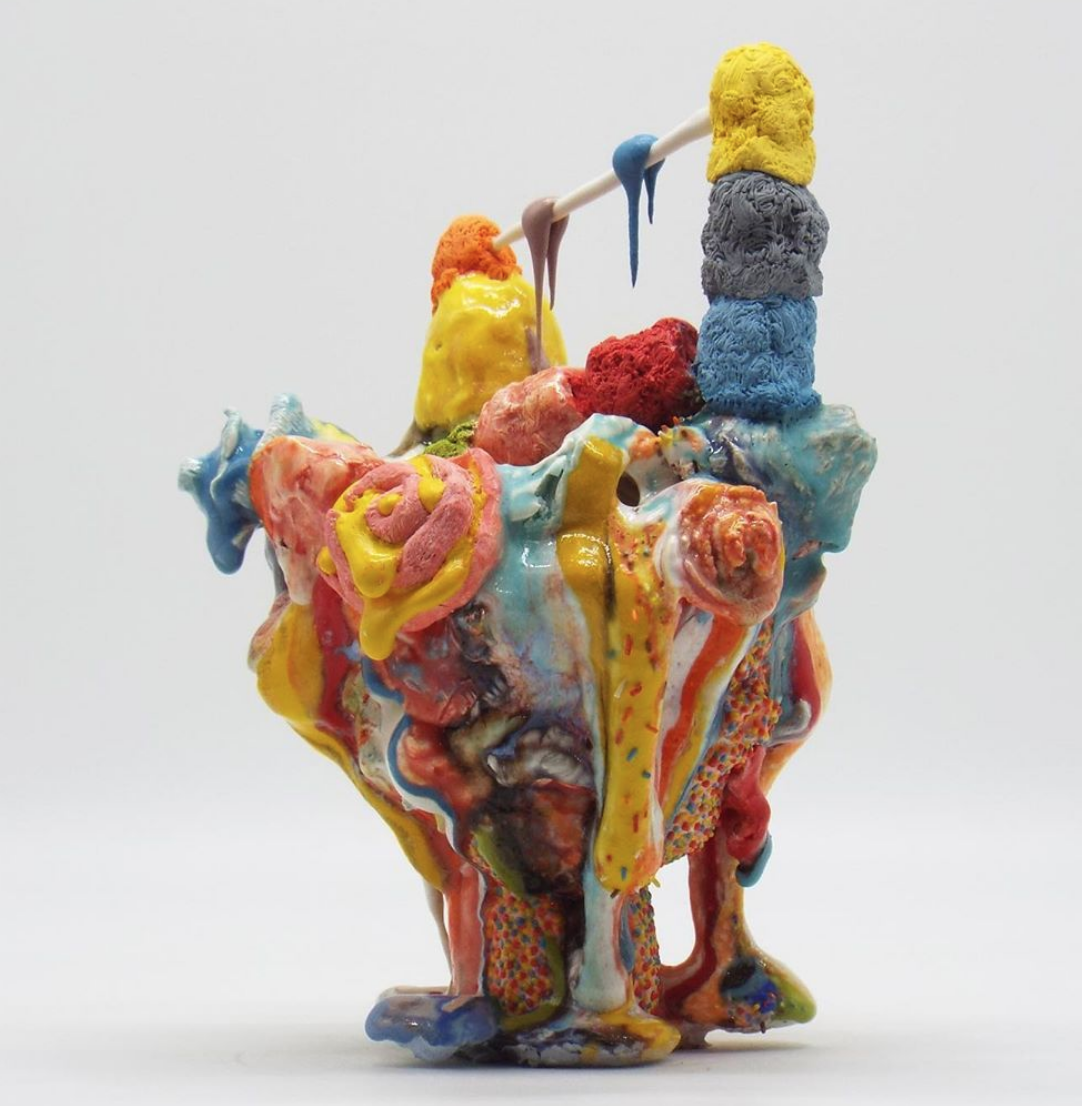
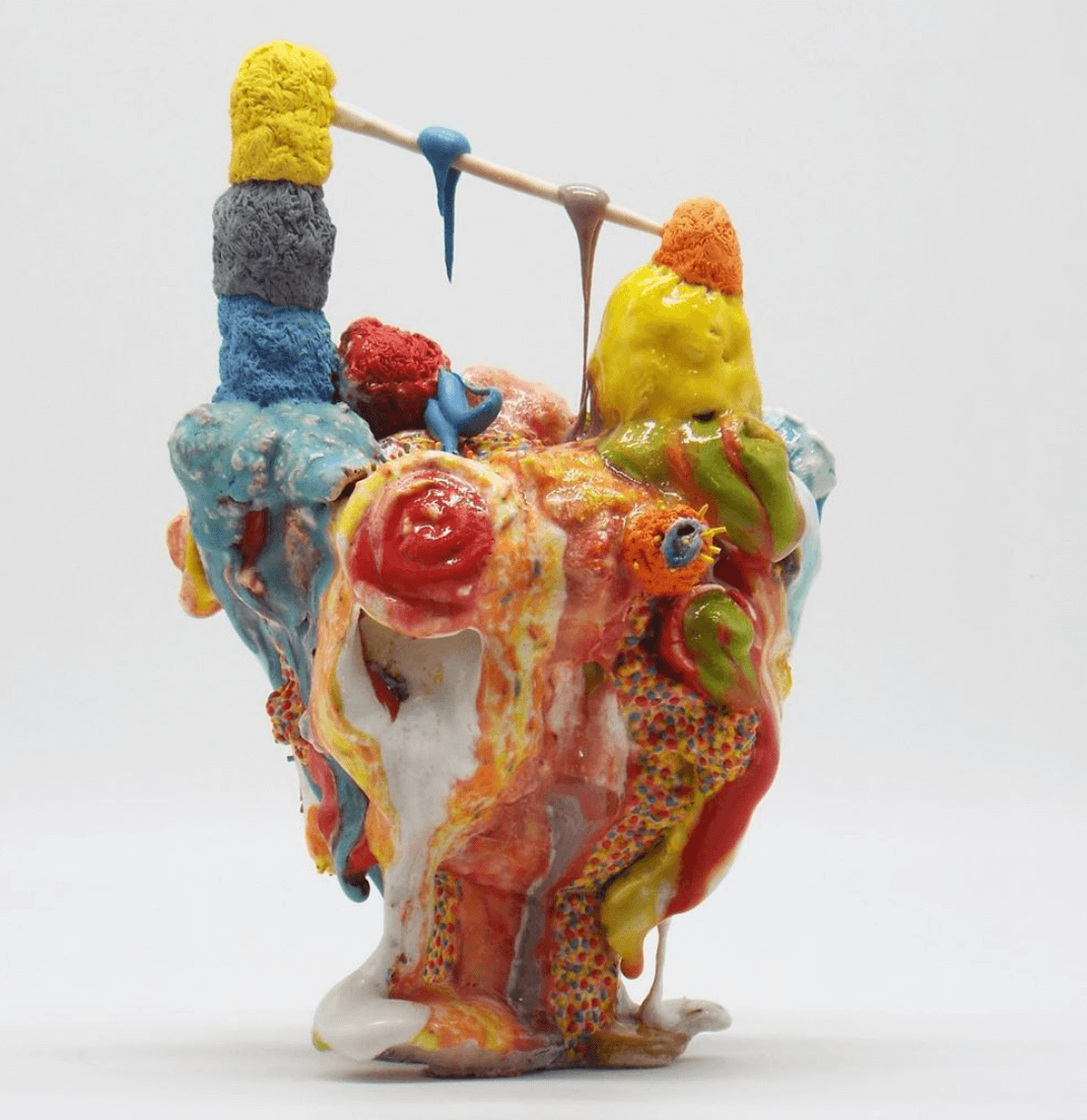
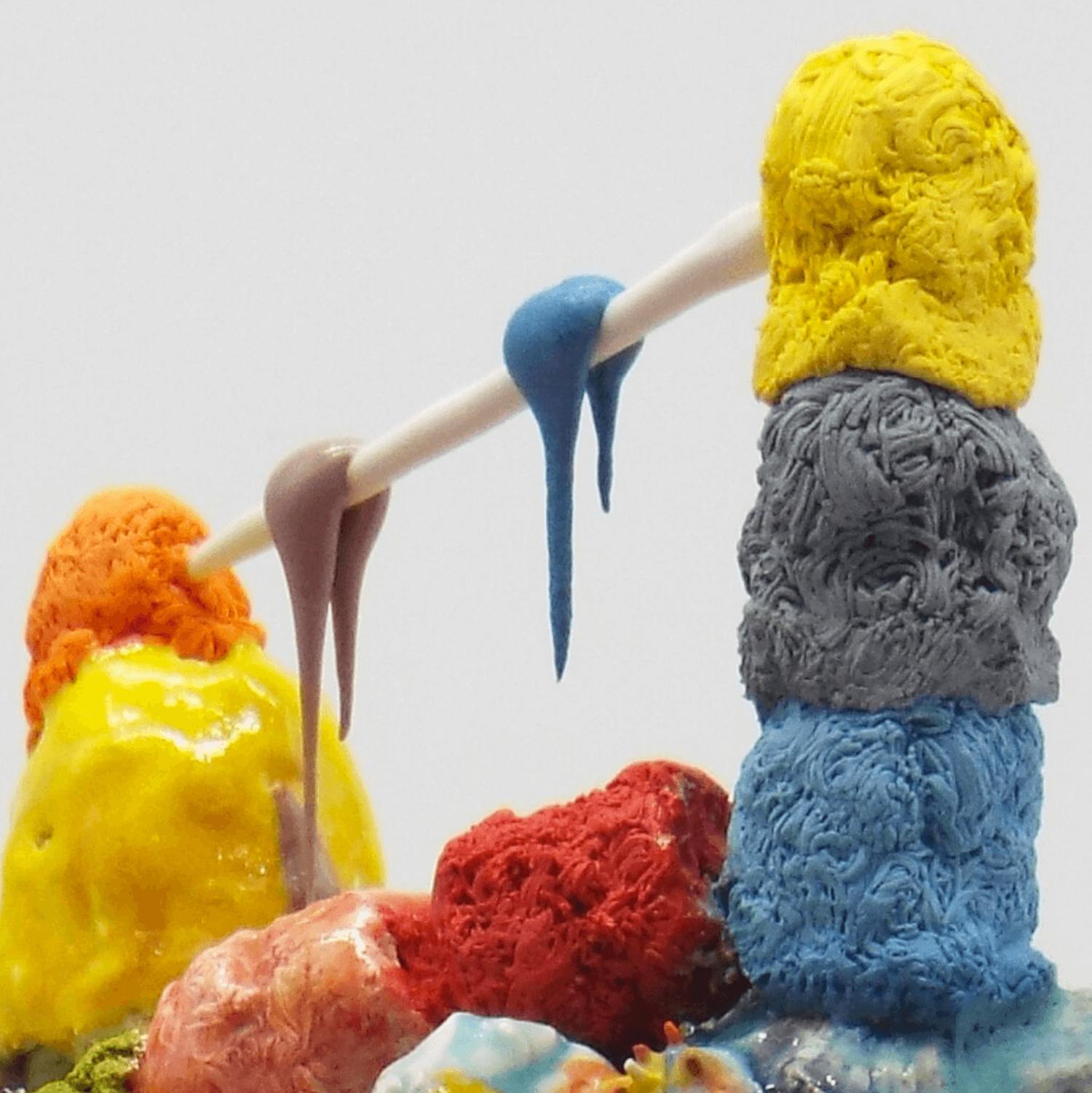
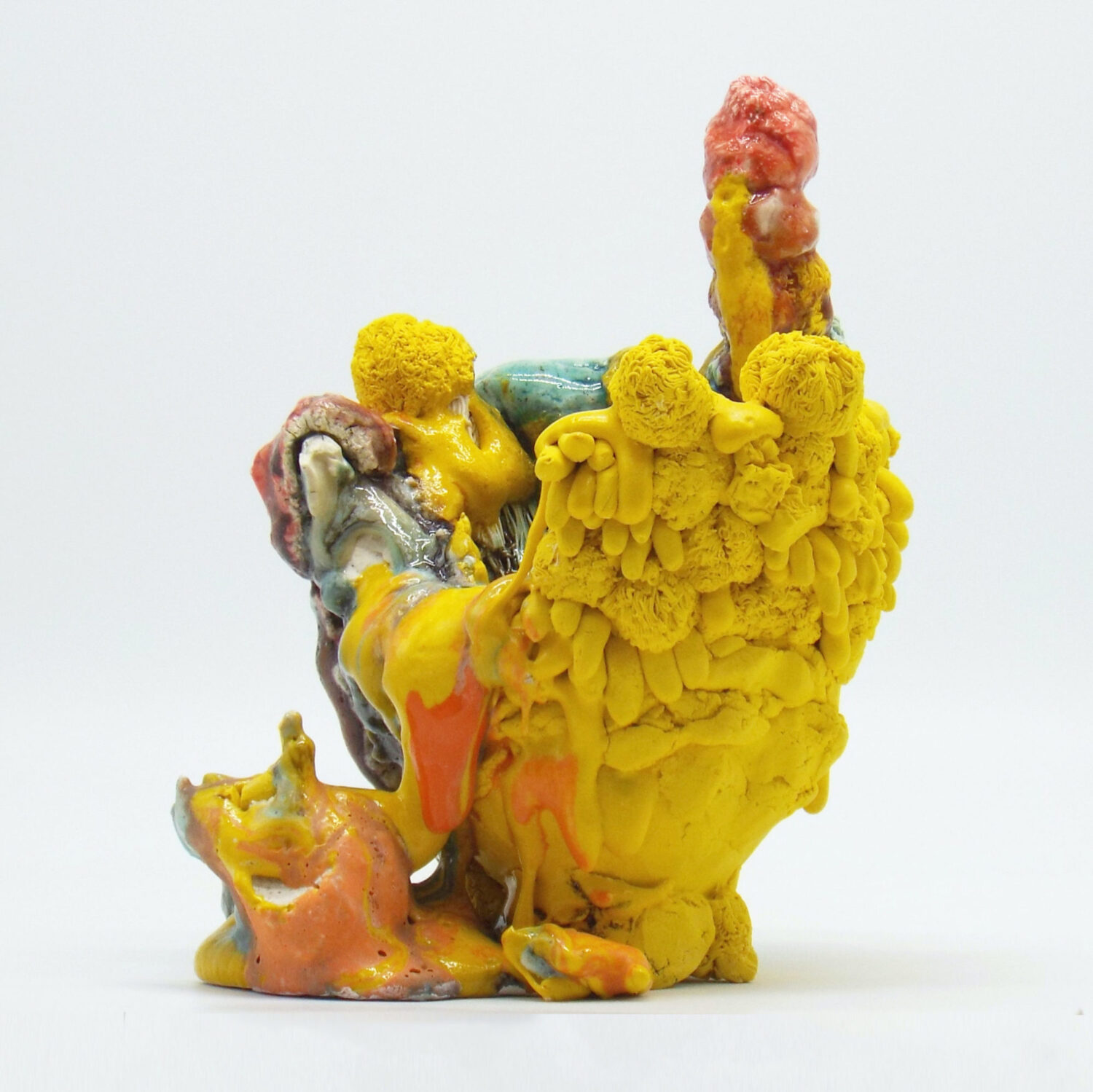
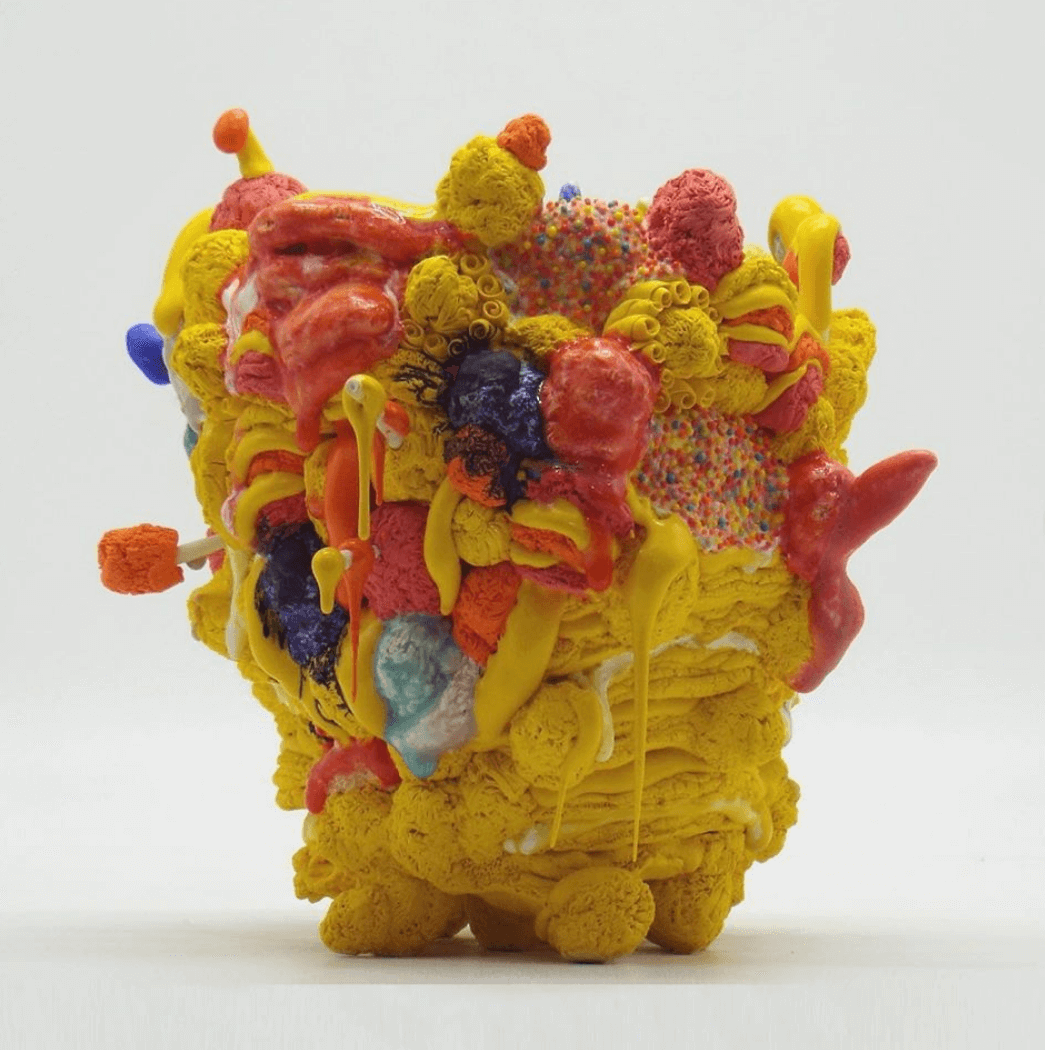
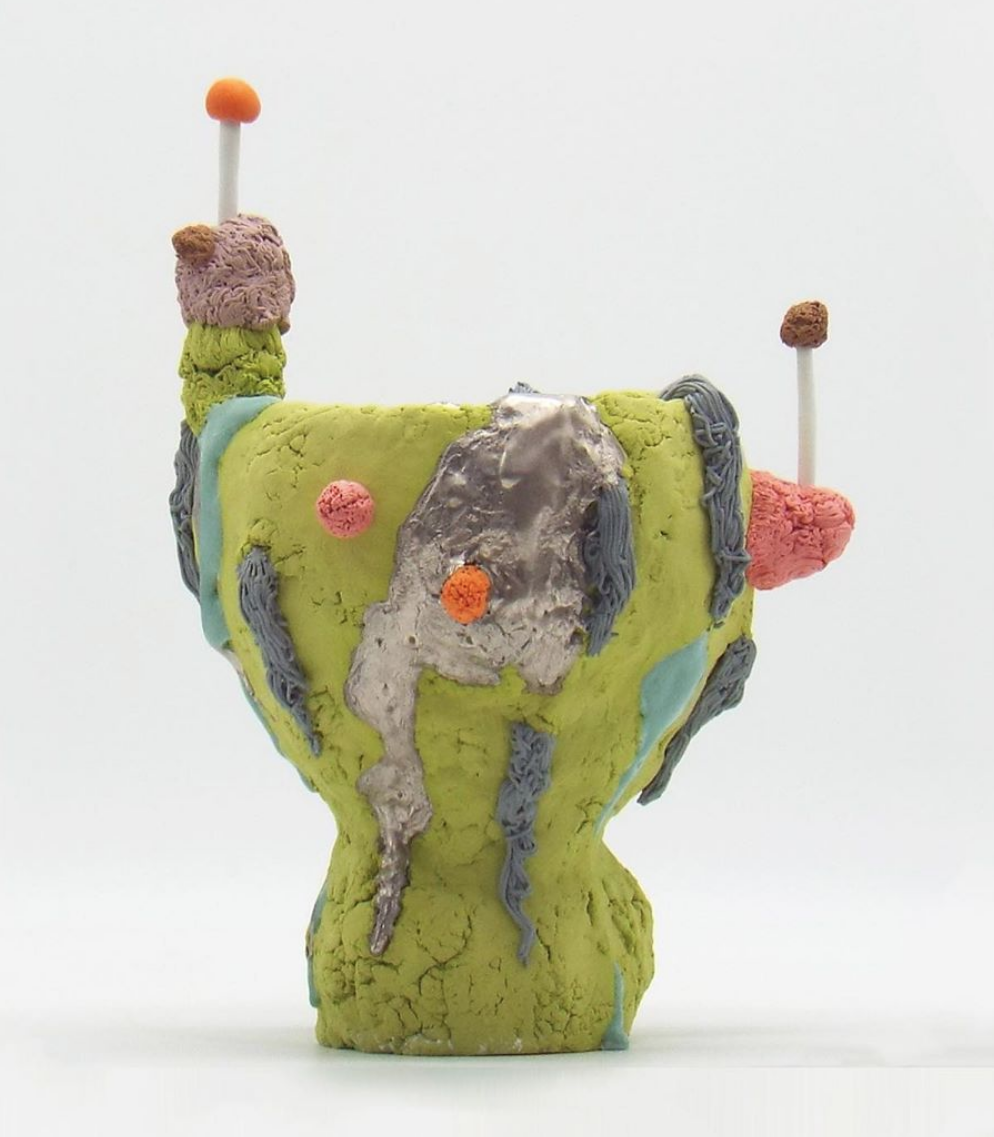
Put the work of the three together and talented Kawai survives on his own terms. My interest, once he gets over this kind of theatrical tours de force, is where he will go in the future. It can hardly be more, so it would be insightful to see what he does with less.
Garth Clark
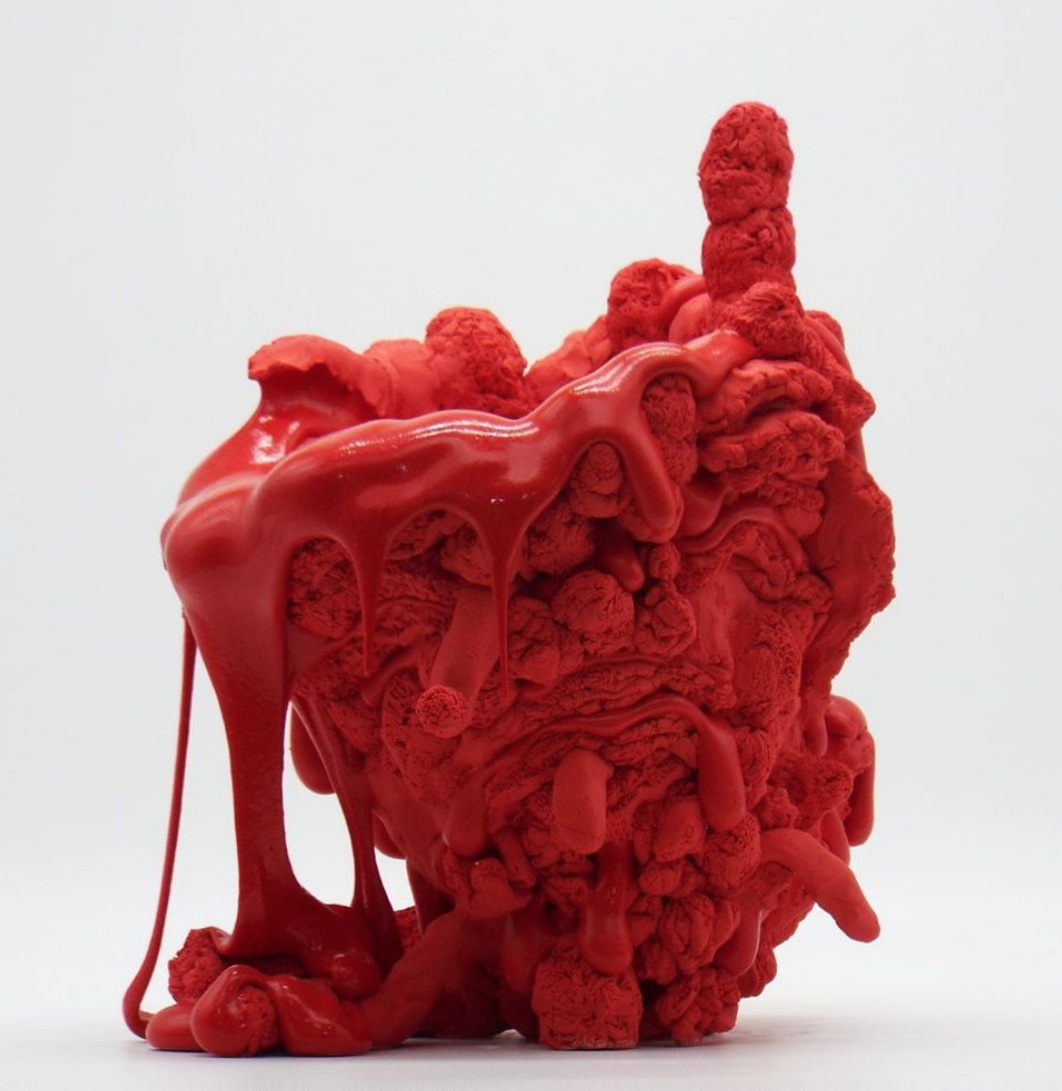
Yes, I am wondering to what will be the next step.